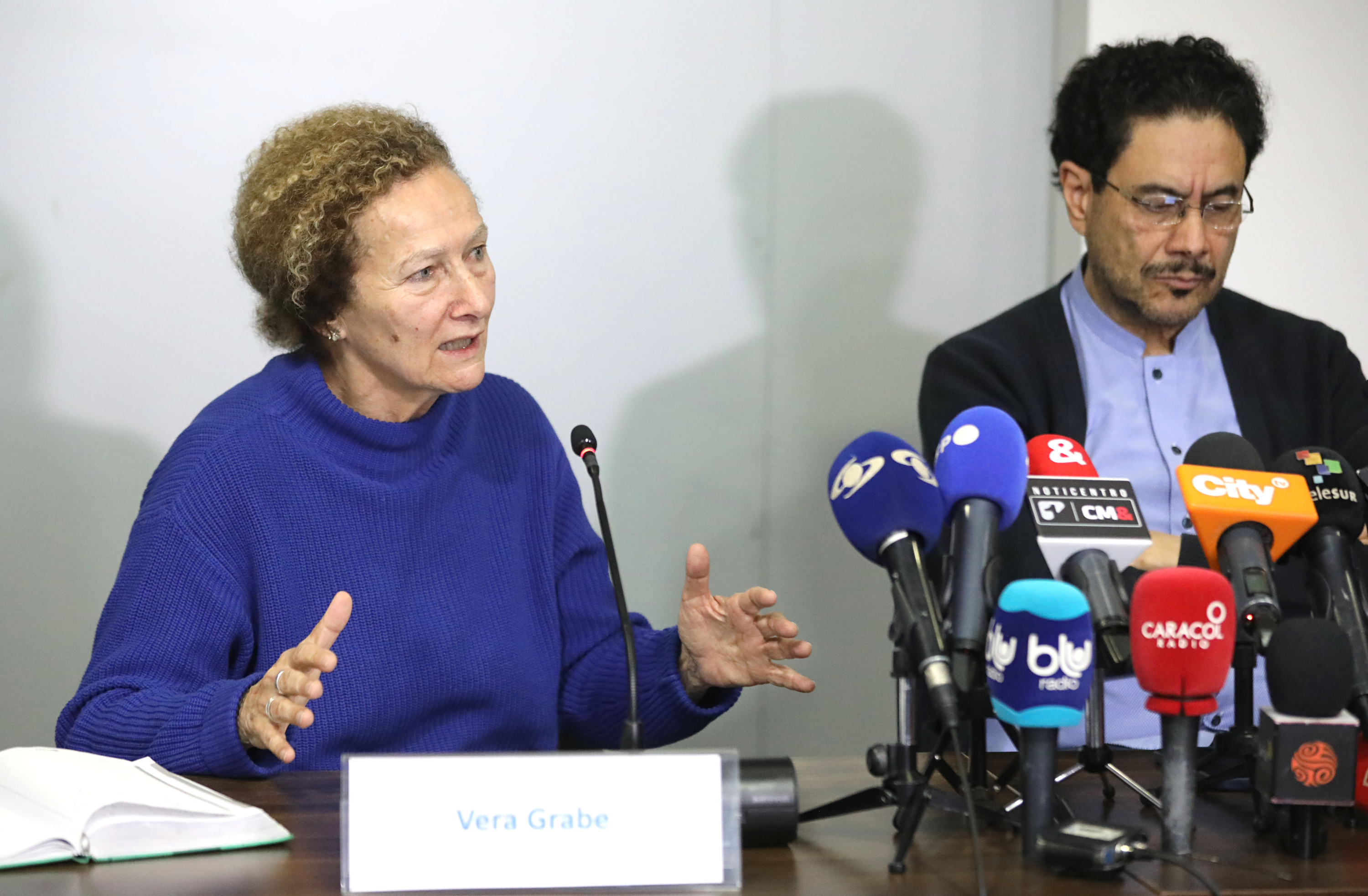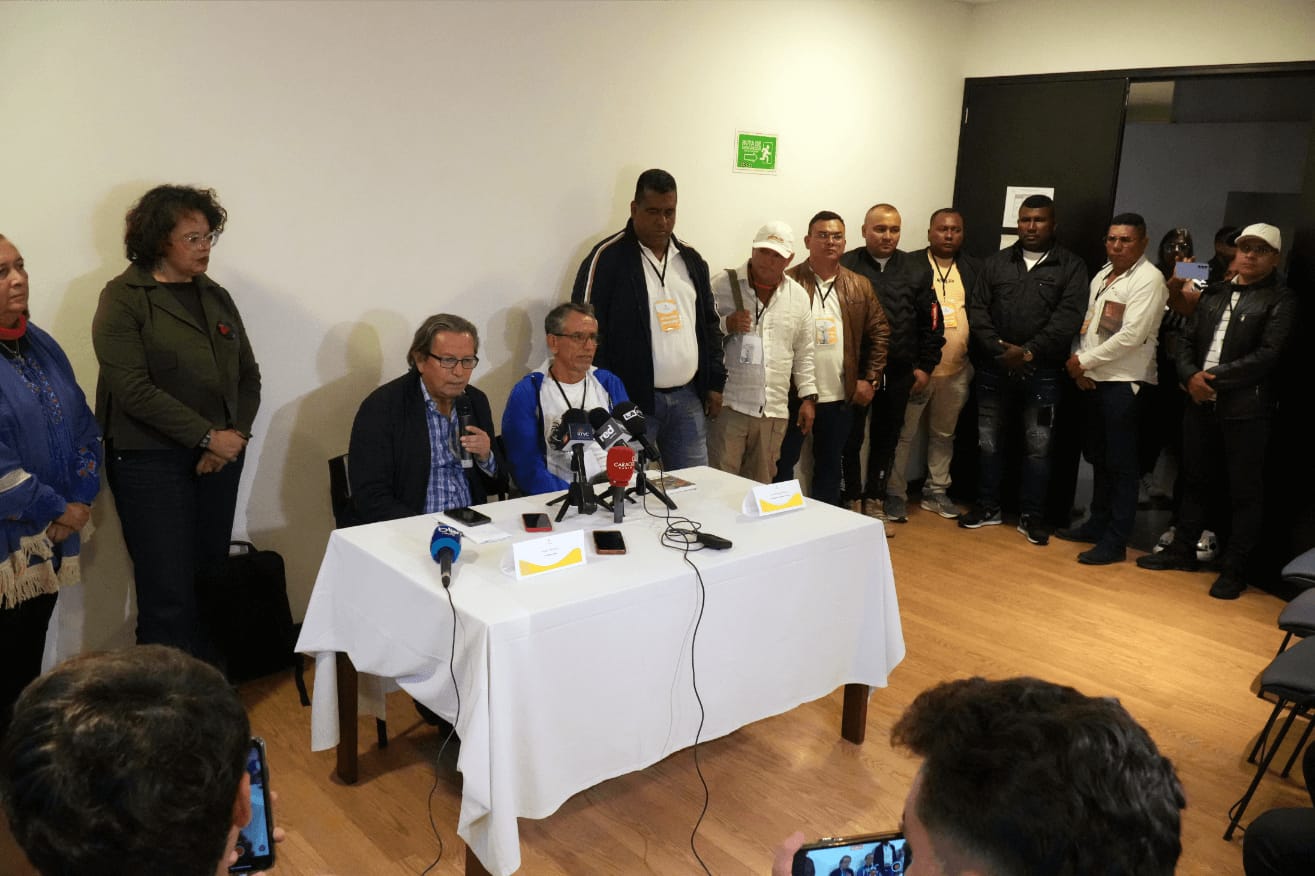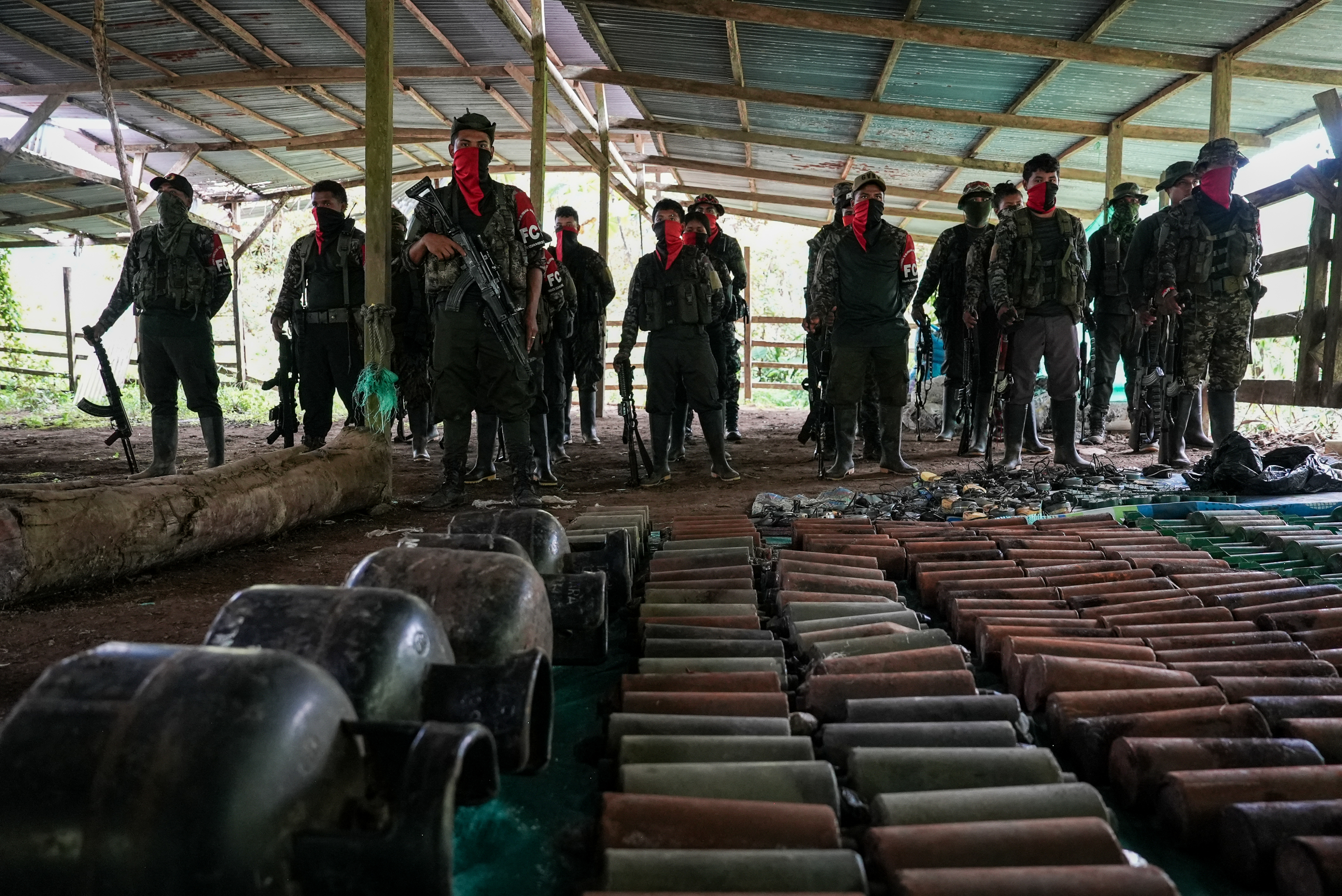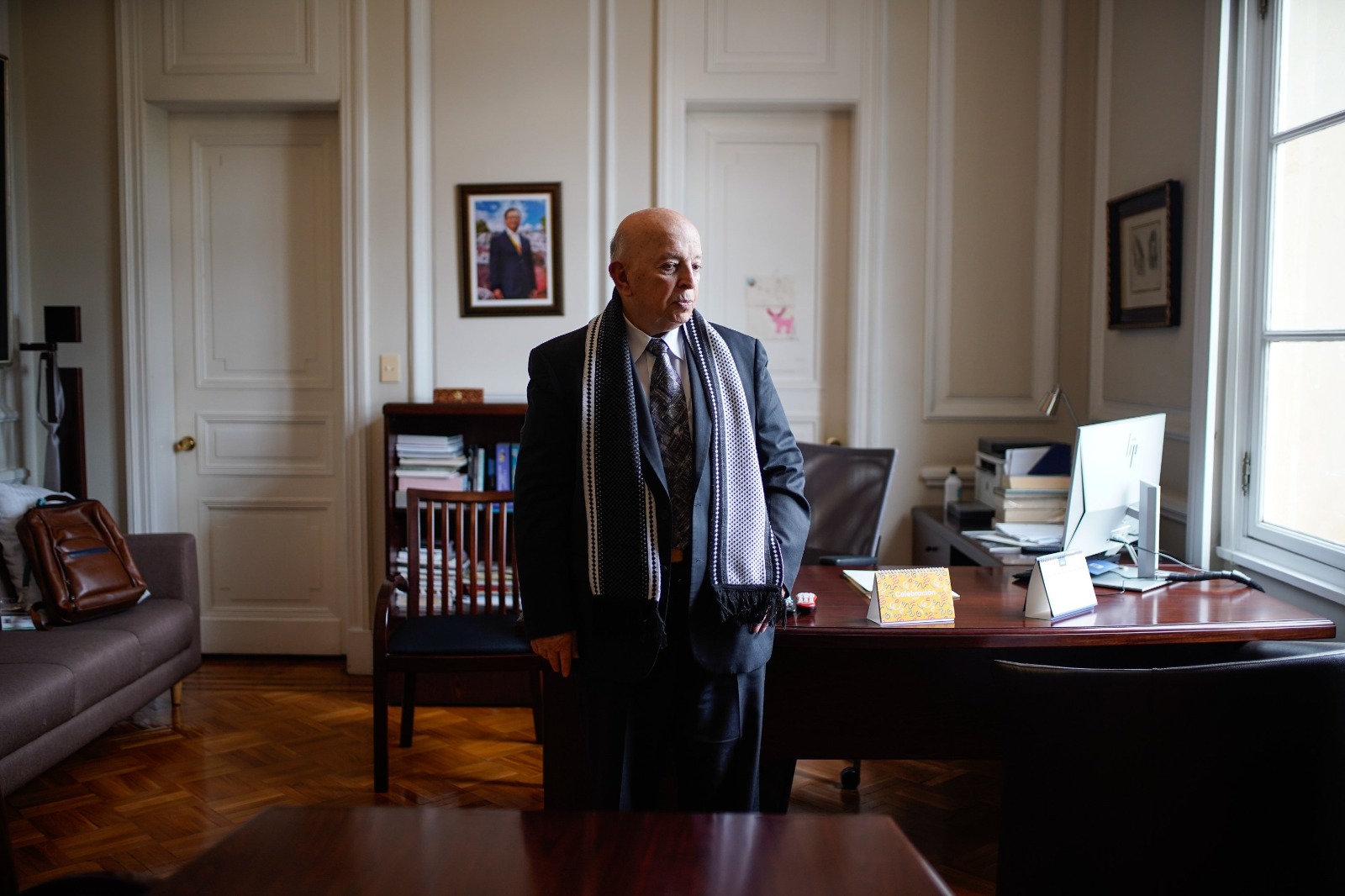Despite progress with Comuneros del Sur, 'total peace' enters its final stretch amid doubts and uncertainty.

A little over a year before President Gustavo Petro leaves office in Nariño, and amid the escalating bloodshed in the southwest of the country and other regions, it is clear that the ambitious goal of "total peace" will not be achieved. Even if the government manages to consolidate the processes with the Comuneros del Sur Front and the National Coordinating Committee of the Bolivarian Army—two dissident factions, the former from the ELN and the latter from the FARC—the progress eventually achieved, while valuable, does not appear sufficient to sustain a positive overall balance.
The last two weeks, in fact, summarize this administration's peace policy: a gamble loaded with announcements, but with little tangible progress—though there is some. On June 5, eight months after President Petro announced in Montería his controversial idea of reopening talks with former paramilitaries—twenty years after the Justice and Peace Agreement—and of appointing 18 former leaders of the United Self-Defense Forces of Colombia (AUC) as peace brokers, 16 of them—those still covered by that position—published a letter suspending their role, citing alleged noncompliance by the Office of the Commissioner for Peace, led by Otty Patiño.
In an open letter, Salvatore Mancuso, Carlos Mario Jiménez (Macaco), Diego Fernando Murillo (Don Berna), among others, denounced "repeated non-compliance, systematic delays, and a damaging lack of transparency" in their relationship with the commissioner, whom they even accused of alleged "insubordination" to the president's orders.

President Gustavo Petro and former paramilitary leader Salvatore Mancuso. Photo: Presidency
Two days later, Patiño himself issued a statement asserting that the peace process remains in effect and that his priority is to establish spaces for victims, not to establish a forum as the president had intended. This incident highlighted not only multiple legal doubts about the indiscriminate use of the peace process, but also internal tensions between the Peace Office and the National Center for Historical Memory, headed by María Gaitán Valencia.
The crisis, triggered more by a political decision by the president than by technical decisions by the Commissioner's office, reflects, according to Gersón Arias, a researcher at the Ideas for Peace Foundation (FIP), the lack of method in implementing the executive branch's main policy.
"The interpretation is that there is a disconnect between President Petro's announcements and the entities responsible for addressing these issues, or that the Commissioner's office doesn't understand the president's announcements. Furthermore, this measure essentially had a political purpose: to interfere in the 2026 pre-election scenario, rather than to strengthen the rights of victims and society," Arias stated.
This scandal erupted amid persistent rumors about Patiño's possible departure from office for health reasons. Although these rumors were denied, his prolonged absence from the public agenda and the fact that he took a 16-day medical leave in April—during which he was replaced by his right-hand man, María Paz Lara—fueled speculation. It wasn't until June 7 that the Commissioner's office confirmed that Patiño had undergone surgery and was in the process of recovery.
Processes in crisis Of the seven roundtables established within the framework of the "total peace" agreement, three have shown little progress or are suspended. The most emblematic case is the process with the National Liberation Army (ELN), suspended by the government in January following an offensive by that group against the 33rd Front of the FARC dissidents, which left more than 130 dead and nearly 66,000 displaced.
Since then, there have only been exchanges of statements—although a channel of communication remains open. The most recent occurred on Wednesday, when the ELN claimed to be "left without an interlocutor," to which the government delegation, led by Vera Grabe, responded by reminding everyone that the process is at a standstill due to the actions of the armed group itself.
"Their operation in Catatumbo left thousands of victims, and there has been no consideration or reflection regarding the effects of their actions on the population and peace," said the delegation led by Grabe.

Vera Grabe, head of the government delegation to the ELN. Photo: Milton Díaz. El Tiempo
Urban peace processes—or "socio-legal dialogue spaces," as the government calls them—have also made little progress, primarily because they lack a legal framework that offers a legal solution to members of criminal organizations in Medellín, Quibdó, and Buenaventura. Added to this is a succession of crises that have weakened their development.
In Quibdó, for example, there has been no truce between the groups "Los Mexicanos," "Locos Yam," and "RPS" since March. The arrival of Brenda Rentería as coordinator of the government delegation, replacing David Racero, raised expectations, but her departure just two months later, without further explanation, confirmed the stalemate. Medellín shows the most notable progress: the 12 armed groups participating in the process signed a commitment to curb extortion. However, the process is moving forward amidst mistrust among neighborhood residents and without effective dialogue with the Mayor's Office and the Antioquia Governor's Office.
Furthermore, although there are resolutions to establish spaces for dialogue with the "Gulf Clan" and the Sierra Self-Defense Forces, those negotiations have not yet begun, and President Petro's position of resuming bombings against the former indicates that there will be no dialogue.
The location zones Currently, only three processes remain truly active and hold regular meetings: those carried out with the Southern Communards, the National Coordinator (which emerged after the fragmentation of the Second Marquetalia), and the General Staff of the Blocs and Fronts. This latter structure includes the Jorge Suárez Briceño Bloc (commanded by alias Calarcá), the Magdalena Medio Bloc (where the 33rd Front operates in Catatumbo), and the Raúl Reyes Front.
In these three cases, the main breakthrough has been the signing of agreements to establish Temporary Location Zones (TTZs), where members of these groups would pre-concentrate. The most recent agreement was signed last Tuesday in Pasto, when Royer Garzón, alias Jairo, and Carlos Erazo signed an agreement to locate approximately 140 members of Comuneros del Sur in the municipality of Mallama. The commitment includes the surrender of weapons and the definitive renunciation of armed struggle.
However, this agreement has not been without controversy. Residents of the region have reported alleged links between the Southern Comuneros and the United Self-Defense Forces of Nariño—a paramilitary organization reportedly comprised of members of this ELN dissident group and behind the murder of Awá indigenous leader Luis Aurelio Araujo and two members of his security detail.

Armando Novoa and Walter Mendoza, spokesperson for the National Coordinating Committee. Photo: Courtesy.
Three other deployment zones are in the process of being established: two with the National Coordinator (in Roberto Payán, Nariño, and in Putumayo), and another with the 33rd Front, led by aliases Jhon Mechas and Richard. This last process is the only one backed by a presidential decree, which establishes its location in Tibú and a duration of seven months.
The decision to locate the area in Tibú is risky, Arias warns, because it is the epicenter of the conflict with the ELN, where there are no real guarantees of security. But also because it is the place to which many families who fled during the first wave of violence are returning.
"It is unknown whether these agreements will actually result in a disarmament process, which increases the communities' exposure to possible reprisals, both from the 33rd Front and the ELN," he concluded.
While this is a significant step for this analyst, it has also drawn criticism, since, as Luis Fernando Trejos, a professor at the Universidad del Norte and peace researcher, maintains, "this situation is reached after facing military attacks from other armed groups, which turns these areas into a kind of lifeline in the event of a military defeat."
On the other hand, uncertainty persists regarding security guarantees for both the combatants concentrated in the deployment areas and the surrounding communities. One of the growing fears is that other armed groups will attempt to enter these territories, which could generate new outbreaks of violence.
"It's also important to be clear about whether combatants arriving in these areas will be armed or will hand over their weapons to a neutral third party for later destruction. This is important because it allows us to determine whether they will actually demobilize or are using these areas to temporarily protect themselves from their enemies," the researcher added.
In response to this question, Royer Garzón, spokesperson for Comuneros del Sur, explained in an interview with EL TIEMPO that the purpose of the agreement is to move toward the signing of a possible peace agreement in the future.

War material delivered in April by Comuneros del Sur, Photo: Courtesy of OCCP
“All deployment zones are intended to lay down or destroy weapons. A temporary deployment zone cannot be conceived without this process. On the one hand, we already have a weapons destruction agreement, which we will continue to implement, and the TZ allows us to make progress on weapons laydown, albeit gradually,” he said.
The change of focus The creation of these settlement zones not only reflects the government's intention to accelerate the process, but also a shift in the approach to the negotiation model. Historically, these processes have been national in scope, as was the case with the negotiations with the FARC, which gave rise to 16 prioritized subregions for the implementation of programs within the framework of the peace agreement.
However, today the Executive branch seems focused on targeted processes where it can accumulate small victories. The most emblematic case is that of Comuneros del Sur, a group with no more than 140 members and a presence limited to the department of Nariño.
"The shift in focus toward territorial issues is due to the failure of the national negotiating tables (ELN, Central General Staff, and General Staff of Blocs and Fronts), in which the national government invested much of its political capital, as these were the central pillars of 'total peace,'" Trejos added.

Otty Patiño, peace commissioner. Photo: Sergio Acero Yate. EL TIEMPO
These results, while not insignificant, fall far short of the promise of complete peace with which President Petro came to power. Added to this is the disconnect between the president's announcements and the state's operational capacity—as evidenced by the peace efforts—and the legal and political fragility of many of these processes.
For now, Commissioner Patiño is scheduled to appear before the House of Representatives this Monday to provide explanations on the implementation of the policy.
CAMILO A. CASTILLOPolitical EditorX: (@camiloandres894)
eltiempo





